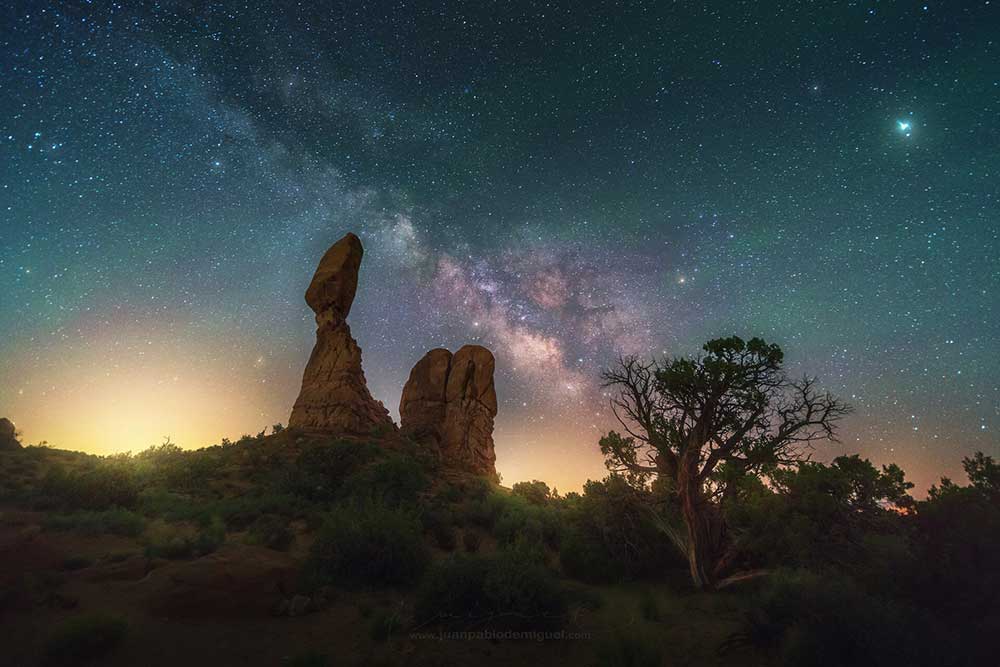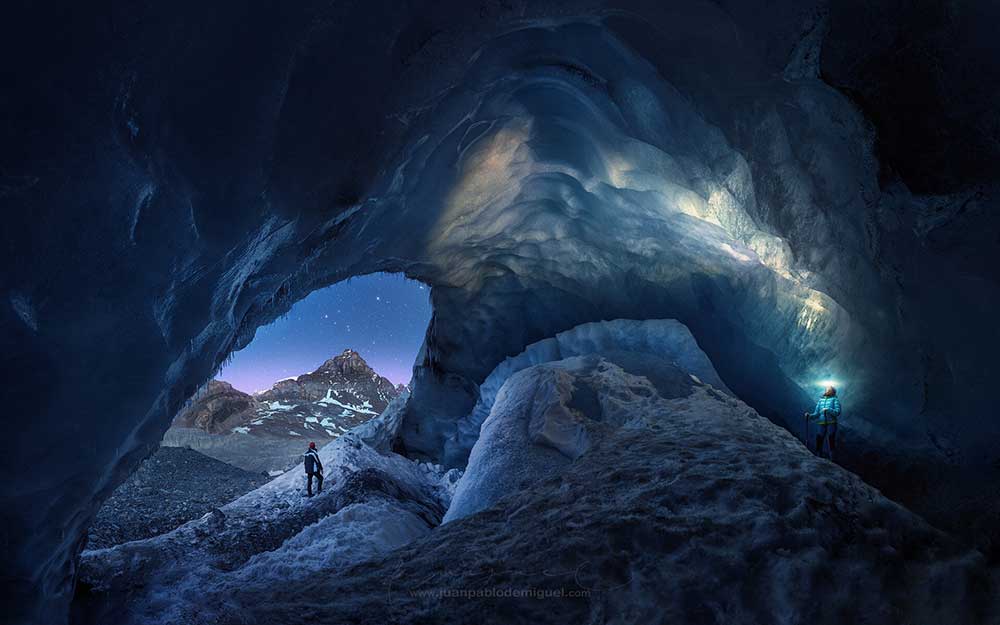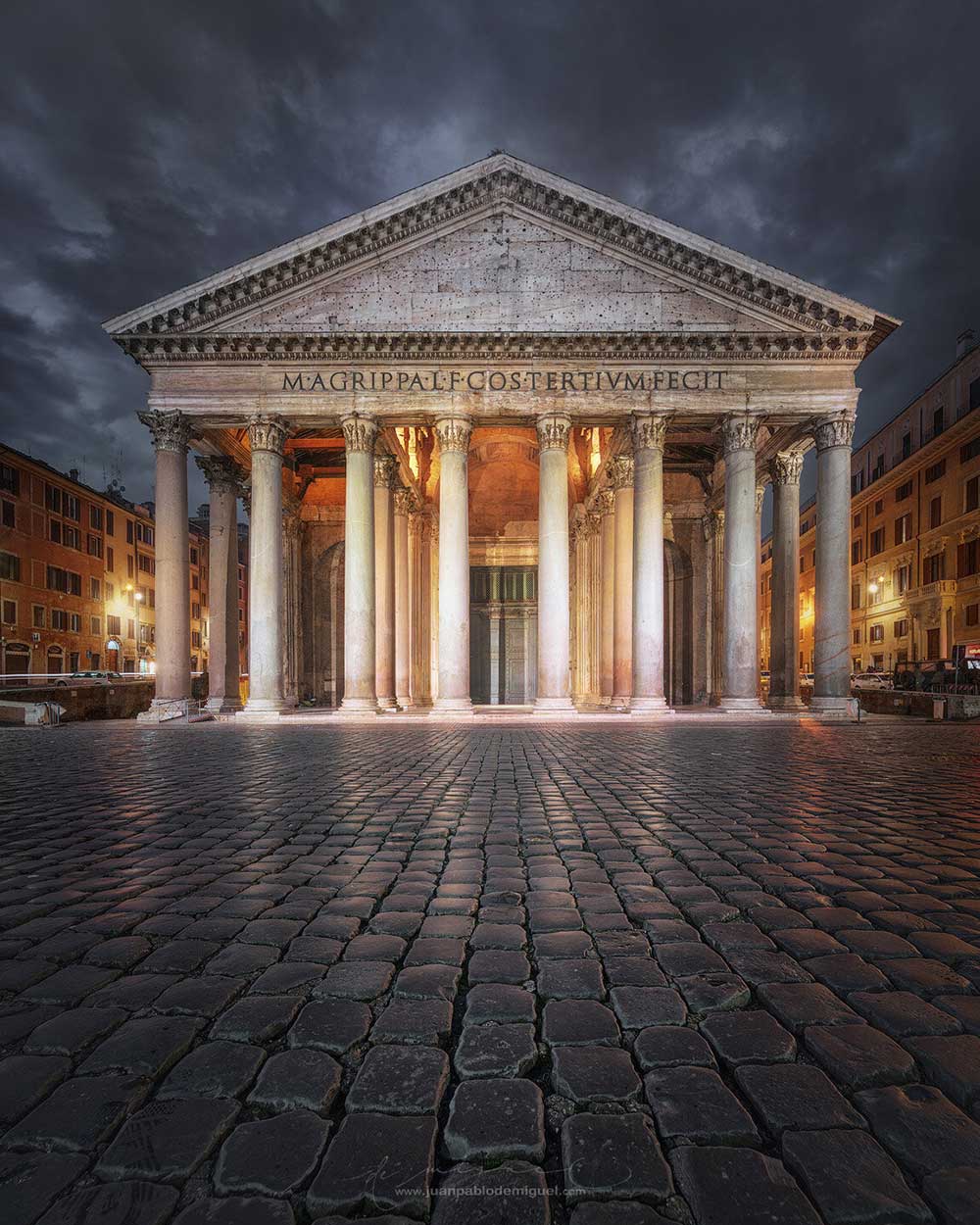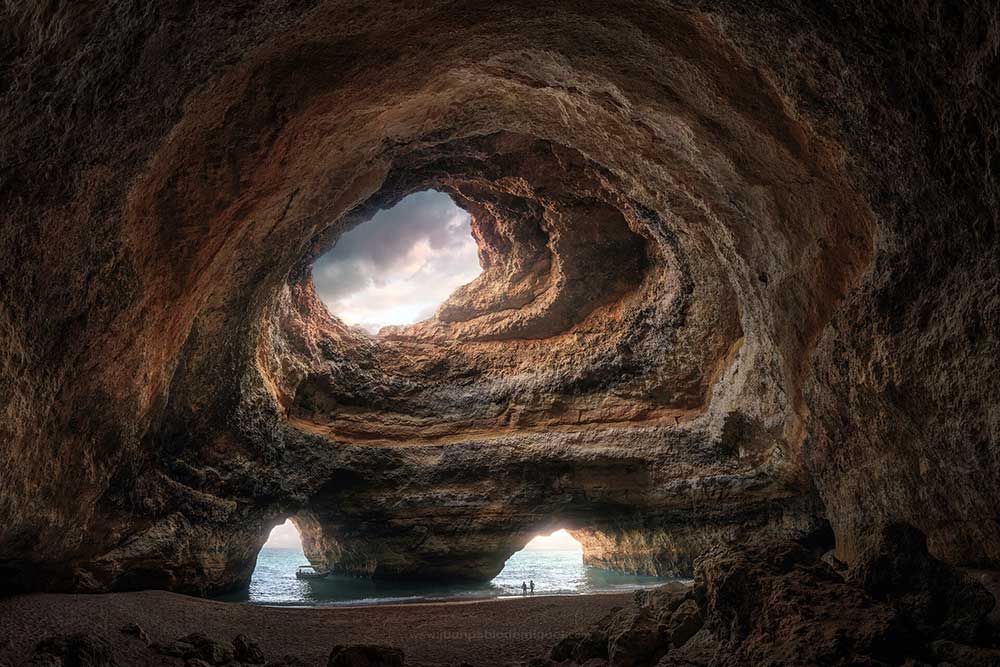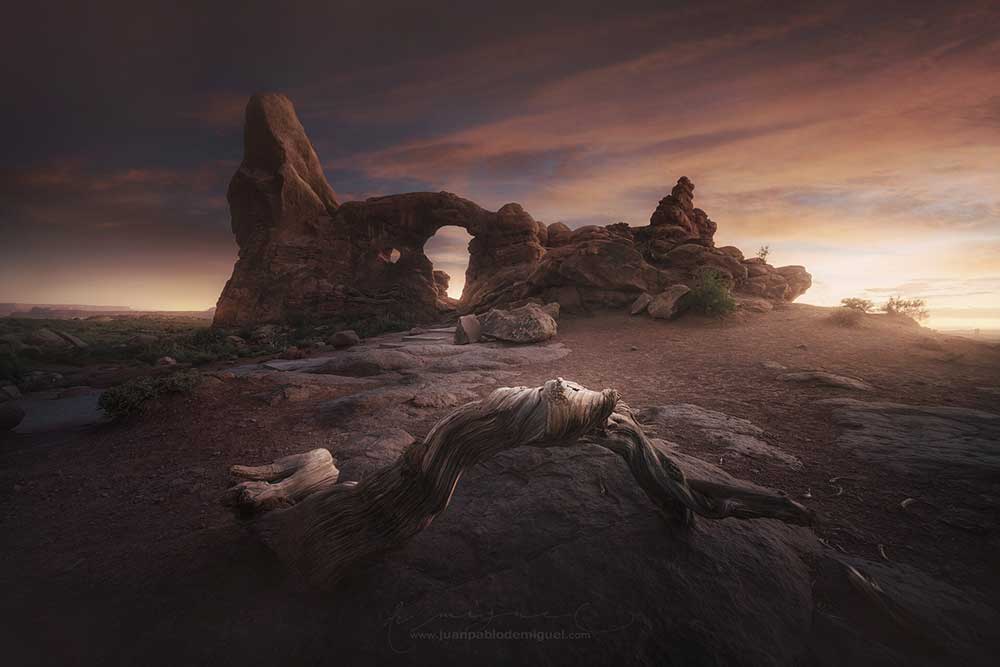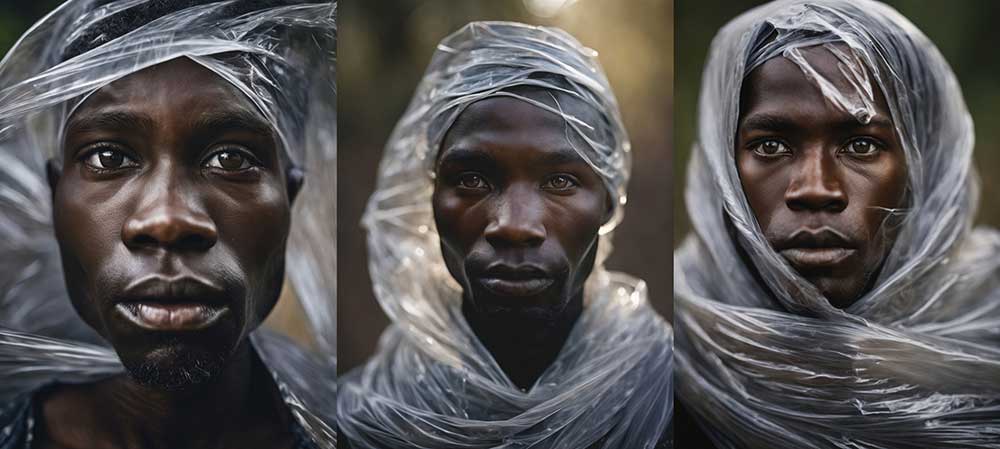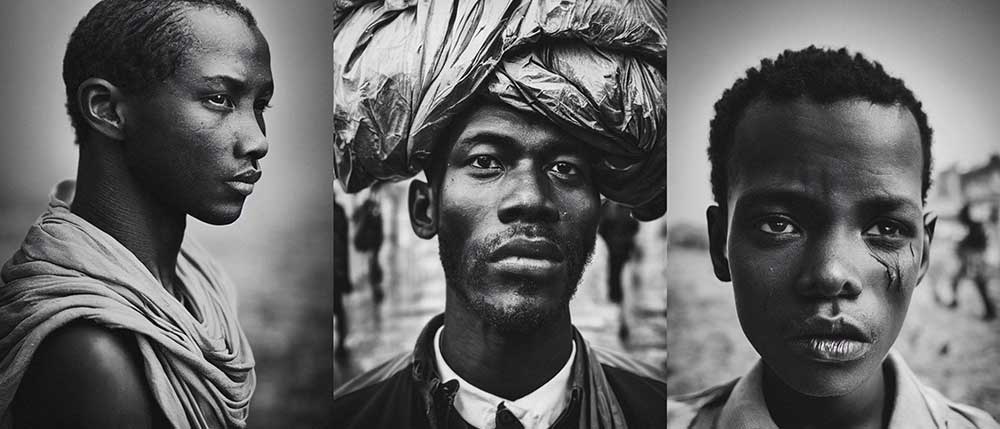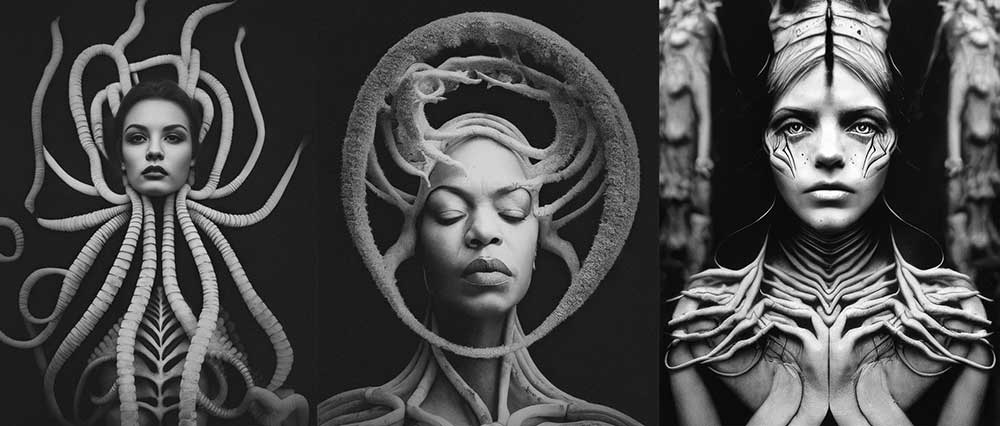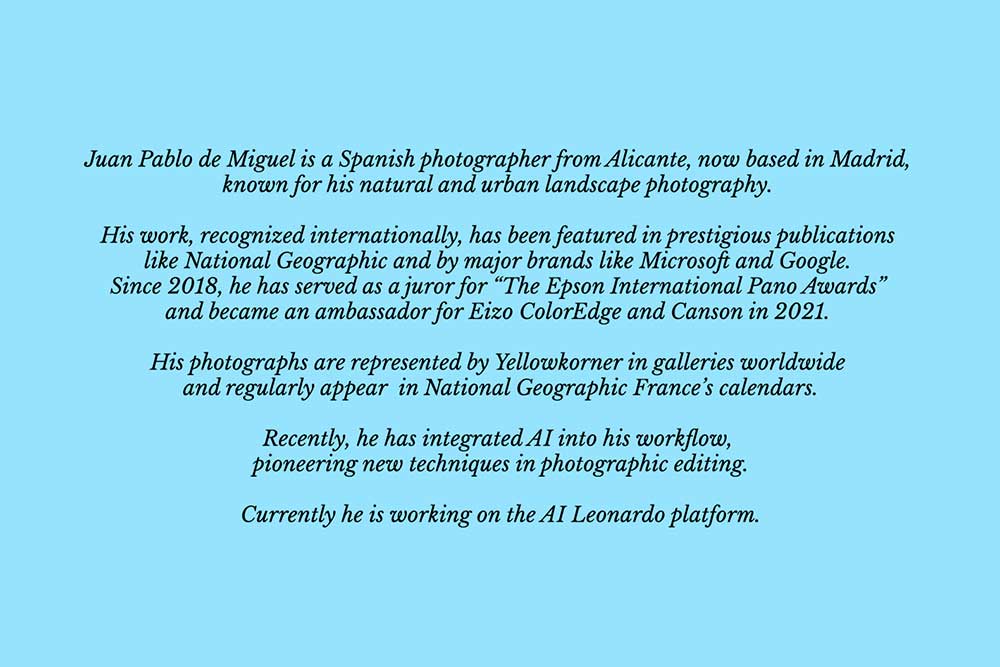I begin a new and fascinating journey within Dodho. I debuted as an “explorer”. Many years ago, when social networks did not yet exist, I already acted as a “coolhunter” for an Italian company that advised big brands on future trends in street fashion and new consumer trends. Now Dodho offers me to do something similar in the field between Photography and AIgraphy.
My first article as “Dodho Explorer” is about Juan Pablo de Miguel, a world-renowned landscape photographer and also a pioneering and innovative AIgrapher, but above all a beautiful person for his generosity, professionalism and teaching ability.
In a moment of high voltage between Photography and AIgraphy in which the old spits plague and horns on the new (as has happened since the origin of humanity), it is precisely Juan Pablo’s “bicephalism” between Photography and AIgraphy that has me taken to interview him, hoping that this can make us reflect, making room for this new way of creating visual art that will surely assume a predominant position in our lives.
The origins and the path towards and with photography
When he turned 14 (1994), on his study trip to Barcelona, Juan Pablo’s father gave him a compact camera (film, of course!) so that he could immortalize the memories of that first travel experience. Juan Pablo found in that camera something that especially fascinated him and awakened in him a potential that had been dormant until then and that found its channel through the viewfinder of that camera. From Almería he had to move to Granada to study a university degree and, in the college where he lived, there was a photography workshop and a developing laboratory. He learned that behind the act of taking photographs there was a technique and some basic concepts that had to be mastered; he bought a second-hand Canon AV1 and with it he was practicing what he was learning. In 2003 he switched to digital almost denying everything he had done until then, although over time he realized that without everything he had learned with analog, he would never have been able to advance so fast in digital. He understood that digital was simply a change of platform and that photography remained the same. But, digital opened up a new world in which he could unleash his creativity and make a landscape into a unique and personal image.
In spite of all that, Juan Pablo had to break down inner barriers before he could say without any hesitation that he was a photographer. The family context: father a philosopher, mother a historian, brother an engineer (and he himself having studied engineering), did not make it easy for him to assume his artistic desires, putting “getting a career” before the empowerment of his artistic qualities. While he was trying to solve and overcome this inner blockage, Juan Pablo was already starting to do some photographic work, weddings or other family events; taking pictures of interiors; giving digital processing classes since 2005 to individuals or at university.
The biggest difficulty was (we all have or are suffering it!) to be accepted in the endogamous circles that “controlled” the artistic photography business, especially in times when social networks did not exist yet… but it coincided with the “boom” of the Internet and Juan Pablo was able to catch this train that was passing in front of him. In 2007 he began to publish his work on Flickr and 500px (at that time not yet saturated as now) and having some photos on their covers, opened important opportunities with major brands. From there (2006) Juan Pablo understood that he could dedicate himself to what he wanted: doing some assignments, giving classes and traveling and taking pictures of places around the world that then someone would buy.
This he continued to do happily until 2012, combining it with an austere attitude in terms of luxuries and comforts, but allowing himself the privilege of being in contact with the purest Nature, traveling, enjoying the positive solitude. From this year on, a new photographic “school” appeared, which Juan Pablo joined without hesitation, formed by a group of about 4-5 American photographers (among whom were Marc Adamus or Rayan Dyar) who, bored with the mantra of the time “only RAW”, didn’t give a damn about who said “I am a photographer, not a computer scientist” and began to propose an innovative and creative landscape photography; taking advantage of the golden moment of Instagram, they managed to sweep away everything that came before.
Photography according to Juan Pablo de Miguel
The possibility of taking a landscape photo and then manipulating it to transform it into something unique and personal, was for Juan Pablo the greatest possible fascination. This possibility of bringing to a landscape something that did not exist and that was inside it, has been the motivation that has pushed him to continuously improve both in the shooting and in the digital laboratory.
Juan Pablo considers composition as the master key to differentiate a landscape photograph from the crowd, from an artistic piece. Beauty can be captured and interpreted in many different ways. Not everything that looks beautiful really is, and not everything that doesn’t look beautiful is ugly. A photographer can be in the best place in the world, but, if he fails in composition, everything will turn into nothing. Beyond the subject (which of course makes a difference), a photographer must have a very clear idea of what he is going to and wants to photograph. The second key is the parameters that one chooses to take a photograph, which have to be adapted to the perception that the photographer considers that landscape needs.
Leap to artificial intelligence
In January 2022 Juan Pablo started treatment for multiple myeloma, a disease of the bone marrow (our “blood factory”) that does not work as it should and produces few and bad red blood cells. During the almost 400 days of intensive treatment that also forced Juan Pablo to a long hospital stay, he never lost his positive spirit, his faith and his curiosity towards innovation. His immune system was reset and rebuilt and during this period he had to remain isolated in the hospital. It was there that, computer in hand, he entered the world of artificial intelligence applied to visual art, exploring the potentialities and limits of Midjourney, Stable Diffucion and DALLE-2
Juan Pablo is very convinced that it is necessary to differentiate between Photography and AIgraphy, although this will be more and more difficult to identify if it is not the author himself who declares it. The moment big brands reach agreements with “influencers” to use a character-sosia created with AI to promote a car or any other type of product, AI is already being empowered as another tool for visual creation. Is everything that comes out of AI art? No! Just as everything that comes out of a camera is not art. Only a very small percentage of all photographs taken are art; just as only a very small percentage of images created with AI are art. Perhaps “artisanal” photographers should be protected to guarantee that a project or an image has been made with an artisanal method; in the same way, for example, that milk from organic farming is identified with a stamp. Another thing is photographs manipulated through the use of AI; when does an image cease to be a photograph? If I replace a sky in a photograph with one taken from the Internet, is my photograph still a photograph?
Juan Pablo firmly believes that there will be talents who will know how to generate photographic looking images without ever having been photographers. The important thing is that these people have good taste, that they have developed a visual culture by training their aesthetics by looking at and analyzing many images of different authors and that above all they have the intentionality of an idea that is creatively developed using this new tool.
Juan Pablo tells us the insights of the series made as aigrapher
The series on immigration has a lot to do with the kind of photography I don’t do; I don’t like to photograph sadness; I have never associated photography with drama, but over time I have come to appreciate photographers who understand it that way… Suffering has a very strong impact on the viewer. I don’t have the capacity to go, for example, to the Melilla fence to photograph an immigrant with his clothes torn and his eyes full of fear. But I do feel within myself the need to visualize my interpretation of what is happening there; it was a photographic frustration that IA has allowed me to externalize.
The series on woman-nature has its origin in the works of HR Giger that entered my “radar” a long time ago because my brother showed me a book on the work of this author. Giger’s work is based on the representation of the biomechanics associated with female bodies; I, in my series, wanted to represent a supernatural union of these elements. To be able to get the images I had in my head would have been impossible in my studio, both in terms of time and budget. In this case, the IA has empowered me to give free rein to an idea that I had and that would never have been able to take shape in a handmade way.
Juan Pablo has been working for a few months for the AI Leonardo platform on the development of tools that people will be able to use in their visual creations and is very happy that, after many years, he has been able to recover photography as a hobby. And finally, he recommends a photographer: Paul Apalkin because his portraits are at the same time: technically perfect, refinedly elegant, and conceptually non-banal. [Official Website]
Photosatriani
I am a curious of life with idealistic tendencies and a fighter. I believe that shadows are the necessary contrast to enhance the light. I am a lover of nature, of silence and of the inner beauty. The history of my visual creations is quite silent publicly but very rich personally, illuminated by a series of satisfactions and recognitions, such as: gold and silver winner in MUSE Awards 2023; Commended and Highly Commended in IGPOTY 2022/19/18, honorable mention in Pollux Award 2019; selected for Descubrimientos PhotoEspaña (2014), Photosaloon in Torino Fotografia (1995) and in VIPHOTO (2014). Winner of Fotonostrum AI Visual Awards 2024. Group exhibitions in: Atlántica Colectivas FotoNoviembre 2015/13; selected for the Popular Participation section GetxoPhoto 2022/20/15. Exhibitions in ”PhotoVernissage (San Petersburgo, 2012); DeARTE 2012/13 (Medinaceli); Taverna de los Mundos (Bilbao); selected works in ArtDoc, Dodho, 1X. A set of my images belongs to the funds of Tecnalia company in Bilbao, to the collection of the "Isla de Tenerife" Photography Center and to the Medicos sin Fronteras collection in Madrid. Collaborator and interviewer for Dodho platform and in Sineresi magazine [Website]



